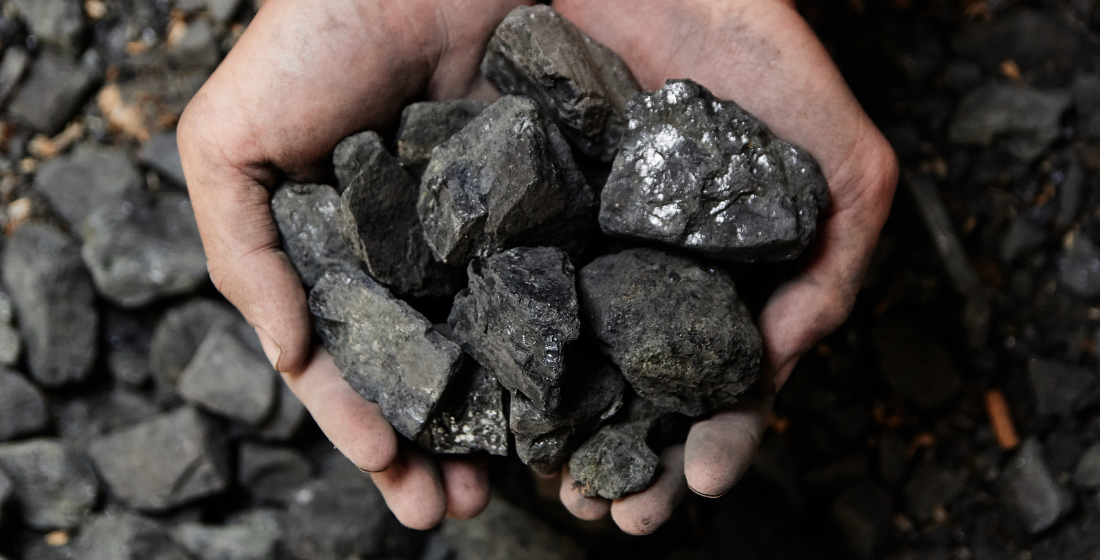Buoying the black stuff
A statement on March 28 by Japan’s Environment Minister signals a potential change in the government’s pro coal-fired power policy. But domestic energy security issues and valuable export markets for Japan's ‘clean-coal’ technology mean any real change will take decades rather than years.

In late February, JERA Power – a joint venture established in 2015 by Tokyo Electric Power (Tepco) and Chubu Electric – raised a ¥272 billion project loan to finance the 1300MW Yokosuka coal-fired power project in Japan. Lead arranged by Development Bank of Japan (DBJ), SMBC, Mizuho and MUFG, the deal comprises an 18-year ¥251.6 billion tranche and a seven-year ¥20 billion VAT facility.
With the debt priced at around 150bp over Tibor plus fees, and state-owned DBJ backing, it would be reasonable to expect JERA’s PR department to go into overdrive – but it hasn’t. The only mention of Yokosuka on JERA’s press release site – nestled among the statements about the Formosa 1 and Gunfleet Sands offshore wind projects, new LNG business and battery storage in the UK – is notice of the project’s environmental impact statement, and only when you go into the documentation does the word coal appear.
For such a big deal to be played down is symptomatic of Japanese government-led hypocrisy over coal-fired power. The country that played host to the Kyoto Protocol is the only G7 economy still planning and developing coal-fired power plants. And Japan has turned coal-fired power technology into a major export via heavily supported financing backed by JBIC and NEXI – between 2016-2018 JBIC lent $5.165 billion to coal-fired power projects in Indonesia alone according to TXF Data.
Coal is a politically divisive fuel – as the ongoing battle to develop the Adani-sponsored Carmichael mine project in Australia illustrates. But it is also the cheapest feedstock available for many emerging economies, particularly those with large domestic supplies. Consequently, even OECD restrictions on ECA financing for coal-fired power, which came into force in 2017, include numerous get-out clauses for lending to emerging markets and cutting edge ultra-super critical (USC) coal-fired technology projects.
Japan’s USC tech is the cleanest in the world, and for coal-rich emerging markets is probably the best, if not the cheapest, of the bad environmental choices available. But even USC generates 50% more emissions than gas-fired technology, so the choice of coal-fired power over cleaner, albeit more expensive, LNG-fired power by a G7 economy is at odds with Japanese government green rhetoric at best, particularly given Japan imports most of its coal.
There are signs of diminishing political support for coal-fired power in Japan. On 28 March Japan's Minister of Environment, Yoshiaki Harada, announced that his Ministry would no longer "in principle” sign off on new thermal coal plants or plant refurbishments. But given final authority for new development rests with the Ministry of Economy, Trade and Industry (METI), the statement may yet prove hollow.
In 2016 the Japanese government approved around 43 new coal-fired schemes totalling 20.5GW of capacity. The Yokosuka project is typical of how Japan justifies the continued development of coal-fired domestic power. The Yokosuka plant will replace ageing facilities previously owned by Tepco: six 350MW oil-fired units that became operational between 1964 and 1970; one 144MW gas turbine that has been operating since 2006; and a 30MW emergency gas turbine unit, available since 1971. The new plant, which is split into two 650MW units due for completion in 2023 and 2024 respectively, will therefore be cleaner than the facilities it replaces.
In fairness to METI, the Fukushima disaster in 2011 and subsequent mothballing of the nuclear sector meant Japan still needed coal-fired power. And pro-coal energy security and diversity of supply arguments made by the Japanese government are valid. But Japan’s 2030 renewables programme is still very unambitious compared with other G7 economies.
METI is predicting a Japanese energy mix of 20-22% nuclear (a restart programme began in 2015), 22-24% renewables, 26% coal and 27% LNG by 2030. The reality may prove very different. When Japan halted nuclear energy its reliance on fossil fuel-fired power jumped from 65% to 84% of the energy mix, with coal at 32% in 2016 and renewables just 15%. Many experts question the ability of METI to deliver its 2030 plan, claiming the technical and safety costs of the nuclear restart make the planned 22% nuclear part of the 2030 energy mix unrealistic, and therefore planned renewables growth will be insufficient to make up for the probable shortfall in that nuclear ratio. Should the nuclear and renewables shortfall become a reality, and based on current policy, coal’s share of the Japanese energy mix could very easily rise rather than thin as planned.
A significant reason Japan remains pro-coal is its geography, which makes land- and sea-based renewable energy development difficult; for example, solar is twice as expensive in Japan as it is in Europe because of the limited amount of suitable land. Japan has significant offshore wind potential – the seventh longest coastline in the world and capable of producing 1600GW of offshore wind – but 80% of prospective sites are in deep water.
The Japan Wind Power Association is predicting development of 6GW of offshore fixed turbine wind and 4GW of floating turbine by 2030. Operational demonstration projects include the fixed 2.4MW Choshi and Chiba, 2MW Goto and Nagasaki, the 2MW Kitakyushu and Fukuoka, and the 14MW floating Fukushima project (although the largest 7MW turbine has been decommissioned due to cost of maintenance). Planned commercial-scale projects include Japan Wind Developments’ 1000MW Tsugaru and 800MW Mutsu schemes.
Floating offshore wind turbines could provide the answer to Japan’s deep-water problem. Ideol and Macquarie’s Acacia Renewables signed a MOU in 2018 on developing Japan’s first utility-scale commercial floating offshore wind project and construction is scheduled for 2023.
But floating offshore wind is still in its infancy and costs, for now, are high. Consequently, despite Minister Harada’s recent promise to not sign off future coal-fired power developments, practicality and cost of power are likely to mean new coal-fired schemes continue, albeit with a low PR profile.
According to a report by Kiko Network, a Japanese climate change NGO, 50 new Japanese domestic coal-fired plants have been proposed since 2012, with eight already operational. Among the 50, plans for seven units were scrapped at the planning stage due to local opposition and management decisions in response to changing business conditions, but as of 30 September 2018, plans and assessments for 35 units were still going ahead. Japan’s hunger for coal-fired power show no signs of diminishing any time soon – and with strong export markets for its USC technology, the country is also likely to continue to indirectly promote coal-fired power beyond its borders well into the future.
Now time to get up to speed on the markets.
Here's our exclusive TXF Essentials subscriber content
Expert Briefing: Excess of Loss trade credit insurance set to support trade finance growth
How can Excess of Loss (XoL) credit insurance, which offers up to 100% cover as well as potential capital relief under the Basel regulatory framework, help banks grow their trade receivables portfolios? Jonny Carruthers, assistant director at BPL Global explains.
Olam: Finding the right blend of commodity finance
From the first sustainability-linked loan in Asia to the world’s first digital loan, Olam International's fundraising innovations in the agri-business sector are clear. Sujay Sarkar, regional CFO for West & Central Africa at Olam, discusses the commodity trader’s recent activities across Africa – and beyond.
Vodafone SCF: Who's supporting who?
Vodafone has been using complex financial engineering devised by GAM and Greensill to enable it to profit from and invest in its own SCF offerings and bolster its DPO. The trouble is the system leaves little reason for procurers to pay suppliers on time.
Plus, to top things off... the news you thought you had but didn't
Fourteen Banks and FIs launch trade finance distribution initiative
The Trade Finance Distribution Initiative (TFD Initiative), an attempt to standardise and improve trade finance distribution via the use of technology, is launched today. The TFD Initiative includes 14 banks and financial institutions.
Uruguay rail PPP project progresses
Sponsors of the approximately $1 billion Ferrocarril Central rail PPP project - Via Central, a consortium comprising Sacyr (40%), NGE Group (27%), Saceem (27%) and Berkes (6%) - have received environmental approval for the scheme from the Uruguayan government.
Markanday jumps to King & Spalding
Project finance lawyer Nikhil Markanday has joined King & Spalding as a partner in the London office of its Corporate, Finance and Investments Group. Markanday joins from Ashurst where he spent 17 years, the last six as a partner in the Energy, Transport and Infrastructure team.
RAPID project FC due end of April
Sponsors of the $15.3 billion Pengerang refining and petrochemical integrated development (RAPID) project in Malaysia – Petronas (50%) and Saudi Aramco (50%) – have signed common term agreements for the 15-year $9.7 billion loan facility to finance the development of the $15.3 billion project in Johor.
ANZ promotes Halkas
ANZ has promoted Nick Halkas to international head of Infrastructure, Export and Sustainable Finance. Singapore-based Halkas started in the new role in January.
Castleton out for power plant refi
Castleton Commodities International is out to banks to refinance some of its stake in two merchant power plants in the Netherlands – the 426MW MaasStroom CCGT plant (100% acquired in 2017) and the 870MW Enecogen CCGT (50% acquired in 2018).
Makyol sounds out SERV for Turkey's first WtE plant
Turkish construction company Makyol is sounding out banks and Swiss ECA Serv for around €220 million of debt to finance the construction of its 70MW waste-to-energy (WtE) plant.
Pasto-Rumichaca 4G toll road gaining financing traction
Estructura Plural SAC 4g – a consortium comprising Sacyr (60%) and Herdoiza Crespo (40%) – is in the final stages of financing the COP2.3 trillion ($740 million) 80 km Pasto-Rumichaca 4G toll road in Colombia.
Portugal's Environment Minister in for Proximo Lisbon 2019
Portugal’s Minister of Environment and Energy Transition, Joao Pedro Matos Fernandes, has been confirmed as a keynote speaker at Proximo's debut European Infrastructure and Renewables Finance Exchange, which takes place on 30-31 May in Lisbon.
Bangladesh courts JBIC for fertiliser plant financing
State-owned Bangladesh Chemical Industries Corporation (BCIC) is courting JBIC to partially finance the construction of the Ghorasal urea fertiliser plant in Bangladesh.
Poland scraps planned onshore wind subsidy cap
The Polish government has scrapped its plans for a retroactive cap on onshore wind support.
Shuqaiq 3 IWP financing gaining traction
A soft miniperm financing for the Shuqaiq 3 independent water project (IWP) is expected to sign in the coming weeks.
NEP Renewables financing out to general syndication
The financing backing NEP Renewables – the KKR and NextEra Energy Partners (NEP) joint venture (JV) signed in March, which comprises a 1192MW portfolio of 10 operational US wind and solar assets acquired from NextEra Resources – has been underwritten by mandated lead arrangers Citigroup, Mizuho and MUFG and is out to general syndication.
Kipushi zinc-copper mine restart gaining traction
Ivanhoe Mines has completed a National Instrument technical report covering the June 2018 Mineral Resource estimate for the Kipushi zinc-copper mine project in the Democratic Republic of Congo (DCR).
Sanbrado Gold project makes first drawdown
Australia-based gold developer West African Resources has met conditions precedent and drawn down a $75 million portion of the $200 million financing it raised in December 2018 from Tauras Funds Management Pty.





